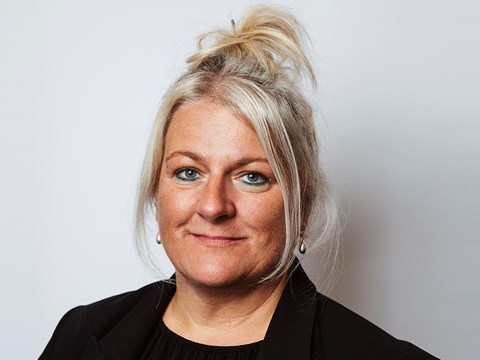Creative Briefing: How Clients Can Write Better Briefs
25 May 2022
Briefs continue to be a hot topic, and for good reason. In a 2021 landmark study, Matt Davies and Peter-Paul von Weiler found that 33% of every marketing budget is wasted on poor briefs and misdirected work. In 90% of AAR deep-dive client/agency reviews, whether the agency is in-house or an externally-sourced partner, the quality of briefing is always a topic of debate. It's the repetitive row that never seems to get resolved. But why?
Briefs are pretty magical - and they should be the most exciting part of the journey. At their best, they’re an inspiring, challenging kick-off point for fantastic work; they’re the ‘why?’ that maintains the focus and facilitates fantastic outcomes. But at their worst, they can be hastily knocked together by someone without the appropriate training and supervision, which already limits the chance of great work.
Clients need to ensure they’re setting up for success, but what does this involve in reality and how do we get out of this repetitive bad briefing rut?
Why are agency briefs and creative briefings important?
No matter how talented an agency is, great work requires great input. Agencies need to know exactly what the problem or tension is that they are being asked to solve, what the work needs to achieve, and what the process for delivery is. This is where briefs come in - they act as a roadmap for turning the goals or ambitions of the client into concrete strategies and deliverables.
Put simply, an agency brief is a document or deck that a client provides to their marketing, creative, media or in-house agency with the intent of ensuring great outcomes: by setting clear expectations and processes for their output.
What does a great creative brief need to achieve?
While the nature of a brief will depend on the project and work it relates to, there are a few things it always needs to achieve and include:
- Task to be delivered by the agency/ in-house team
- Background - including clarity of any problems/ opportunities
- Objectives to deliver against
- Measures/ KPIs
- Target audience
- Proposition (and messaging hierarchy)
- Deliverables and deadlines (with timings, flexibilities, and contingencies)
- Mandatories - including budget, operational, legal and compliance and brand considerations
- The level of co-operation/ collaboration expected with other colleagues/ agencies/ in-house teams etc.
- Stakeholder sign off process/ RACI - who, what, when
In essence, you need to make sure your agency has everything it needs to deliver their best work against the problem you’re trying to overcome, or the opportunity you’re trying to capitalise on.
That said, it’s perilously easy to fall into the trap of thinking every ounce of information - including the kitchen sink - will be helpful. But in the words of the Spice Girls, please stop right now! A brief needs to succinctly distil the issues and insights into a clear and coherent story to be effective. If the brief reads like war and peace, this will never inspire the creative journey or be an effective means of judging the quality of work when presented back. So let's take a moment to shine a spotlight on several things a brief should never be:
- A form filling exercise
- An obvious cut and paste job, or a disconnected set of words
- Something to be rushed with no care/ attention to the story you are telling
- A collation of of buzzwords, jargon and TBC objectives that destroy motivation
Don’t let your brief become one of these things. The more focussed and thoughtful your brief is, the more clarity your agency or in-house team will have to work with. Briefs and briefings do need to be adapted depending on the scope and scale of the task, yes, but at their heart they all have the same intent - good work!
Unfortunately, a lot of marketers will tell you that briefs are rarely given the attention they deserve, or that they need to be truly effective. There are a number of reasons for this, and a range of things that brands can do to ensure their agency briefs are as effective as they need to be:
Don’t waste everyone’s time…
One of the scarcest resources in the modern world of marketing is time. Particularly in the case of your agencies and in-house teams; it’s something you’re literally paying for. And when it comes to agency briefs, if they’re not done well, time is going to get wasted - yours, and everyone else’s.
If you do happen to get good work with a bad or hasty brief, then great - but let’s be clear, you’ve been very lucky, and this definitely won’t last. But invest time wisely in putting together a fantastic brief, and you’ll maximise the chance of getting fantastic work back.
Clients have the power to control when and how agencies are briefed. They know what their priorities are, and which projects deserve and need the most attention and focus. By working backwards from the deadlines for important campaigns or projects, brands can create more realistic timelines, and factor in the time it takes to build a great brief earlier in the process.
This should be a fundamental part of your planning and internal workflow. Briefs shouldn’t be an afterthought; they should be baked into the project lifecycle, and clients have the ability to ensure this is the case.
You’ve got to be in it to bin it
When it comes to the personnel involved in a brief, a rule that I follow from my time at P&G is ‘you have to be in it at the beginning to bin it at the end’. Having the right people working on the right briefs from the get-go is a crucial, yet often overlooked factor.
Some clients tend to pass the job to a junior member of the team, but this creates a disconnect when it comes to signing off - whoever has responsibility for giving the final green light should be involved right from the start. Not all briefs need senior sign-off, and it’s important to empower your teams to do this too, but if someone can say no to the work they have to be able to say yes to the brief.
The main factor here is version control: the first draft is never right. Particularly if it’s a complicated creative briefing, it’ll need to be drafted, and shared for comment, challenge, and clarity. This should be part of the process - but whoever is accountable for the outcomes should also be signing off on the brief.
While working to establish appropriate involvement, it’s also important to keep an eye out for ‘stakeholder creep’. Too many cooks can spoil the brief, and while there are always people who need to be consulted, be sure to distinguish between keeping someone informed and asking for their very specific input.
Co-creation, not delegation
When it comes to the content and format of the brief, one of the best things brands can do is to get the agency themselves involved in the process. Agencies see all, from the good, to the bad, to the downright ugly (aka useless) for working across multiple projects, multiple products, brands and categories.
Opening the channels to co-creating the brief isn’t just a far more agile way of doing things; it often provides the agency with greater commercial context and a more holistic view to enable them to shape, contribute and challenge more effectively.
It’s also good to work together earlier to identify the most effective and agile processes for delivery and creation of the brief, and use input from both perspectives. What tools and platforms would the agency recommend? What customer data and research is needed that would add richness and true audience insights? How could the client and agency teams better work together to meet challenging turnaround times and competitive pressures? These conversations are important, and regular wash-ups to discuss learnings and figure this out away from live pressures is something we highly recommend.
Paint the ‘big picture’ from the start, work collaboratively, and your agency will have everything it needs. As an added bonus, you’ll also be taking big steps in strengthening your relationship, and driving that true one team/one agenda nirvana.
Different tasks = differentiated approaches to briefing
Briefs should be put together on the basis of horses for courses. If it’s a simple task, then a simple template, brief and sign-off process will be fine. If it’s a brand new campaign, strategy, or plan then you’ll naturally need a different approach - one that involves more people, takes more time and is more coordinated. One size fits all just doesn’t cut it.
The secret to great creative briefings
There may not be a magic bullet when it comes to creative briefings and agency briefs, but that’s probably because great briefs are the magic bullet. Excellent briefs result in excellent work, and more often than not, issues with delivered work can be traced back to a flaw in the briefing process.
Ask yourself these key questions of your business: are you using briefs and briefings effectively? Do you have the right people working on your agency briefs? Are you involving your agency at the right time, and encouraging challenging conversations that address business problems and known tensions? Are you asking your agencies what more they need to deliver their best thinking and work? Do your briefs inspire the creative journey? Do you get the work you deserve, be that good or not so good?
If the answer to any of these questions is no, it’s time for a bit of reflection. Thankfully, a few simple changes can have a butterfly effect, giving your team the best ability to get absolute clarity on what the task is - and to create something magical. After all, who doesn’t want magic?
About The Author




